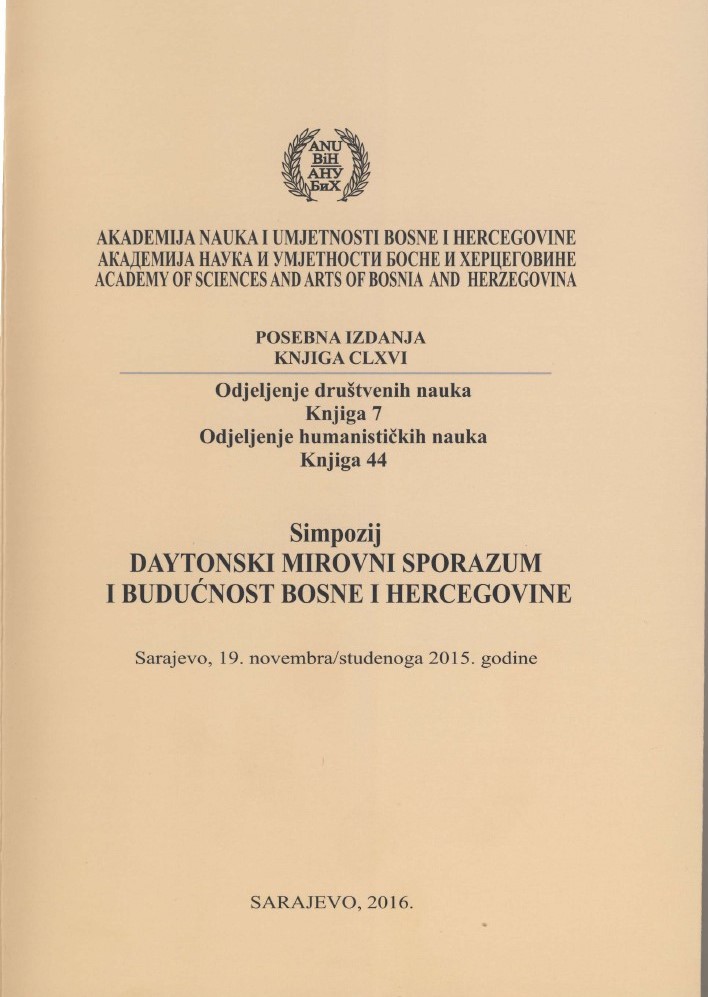DEMOGRAFSKO-STRUKTURNE PROMJENE U BOSNI I HERCEGOVINI NAKON DEJTONSKOG MIROVNOG SPORAZUMA
DEMOGRAPHIC-STRUCTURAL CHANGES IN BOSNIA AND HERZEGOVINA AFTER THE DAYTON PEACE AGREEMENT
Author(s): Jusuf ŽigaSubject(s): Social differentiation, Demography and human biology
Published by: Akademija Nauka i Umjetnosti Bosne i Hercegovine
Keywords: demographic-structural changes; BiH; Dayton Agreement;
Summary/Abstract: Although the Dayton Peace Agreement respects the ethnic, religious and cultural multilateralism of Bosnian-Herzegovinian society, in relation to the pre-war period, this multilateralism has undergone radical changes. In addition to the suffering of many people during the war and the massive forced displacement of population both to other countries, and within Bosnia and Herzegovina, negative demographic-structural trends have continued in the post-war period. There was a drastic fallin the birth rate, an increase in mortality and the average age of the local populace, emigration of young people of fertile age continued, as well as the emptying of rural areas, and the uncontrolled influx of population to urban centres that cannot provide the appropriate conditions for life. There was a deterioration of the earlier (pre-war) ethnological diversity of the society that characterized it throughout Bosnia and Herzegovina, and which, as a civilizational treasure,developed in this area over centuries.There was a territorial re-constitution of this country, whereby natural traits of the regions and subregions were disregarded, ie. geosystems, especially in terms of the entity demarcation, and in some cantons in the Federation of BiH. There was rather insistence on conqueringand “appropriation” of certain territories only for one of the peoples that live in this country.
Journal: Posebna izdanja Akademije nauka i umjetnosti BiH
- Issue Year: 2016
- Issue No: 2
- Page Range: 219-228
- Page Count: 10
- Language: Bosnian

